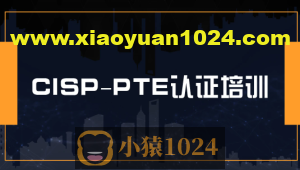你必须非常努力,才能看起来毫不费力!
微信搜索公众号[ 漫漫Coding路 ],一起From Zero To Hero !
前言
日常 Go 开发中,Context 包是用的最多的一个了,几乎所有函数的第一个参数都是 ctx,那么我们为什么要传递 Context 呢,Context 又有哪些用法,底层实现是如何呢?相信你也一定会有探索的欲望,那么就跟着本篇文章,一起来学习吧!
需求一
开发中肯定会调用别的函数,比如 A 调用 B,在调用过程中经常会设置超时时间,比如超过2s 就不等待 B 的结果了,直接返回,那么我们需要怎么做呢?
// 睡眠5s,模拟长时间操作
func FuncB() (interface{}, error) {
time.Sleep(5 * time.Second)
return struct{}{}, nil
}
func FuncA() (interface{}, error) {
var res interface{}
var err error
ch := make(chan interface{})
// 调用FuncB(),将结果保存至 channel 中
go func() {
res, err = FuncB()
ch <- res
}()
// 设置一个2s的定时器
timer := time.NewTimer(2 * time.Second)
// 监测是定时器先结束,还是 FuncB 先返回结果
select {
// 超时,返回默认值
case <-timer.C:
return "default", err
// FuncB 先返回结果,关闭定时器,返回 FuncB 的结果
case r := <-ch:
if !timer.Stop() {
<-timer.C
}
return r, err
}
}
func main() {
res, err := FuncA()
fmt.Println(res, err)
}
上面我们的实现,可以实现超过等待时间后,A 不等待 B,但是 B 并没有感受到取消信号,如果 B 是个计算密度型的函数,我们也希望B 感知到取消信号,及时取消计算并返回,减少资源浪费。
另一种情况,如果存在多层调用,比如A 调用 B、C,B 调用 D、E,C调用 E、F,在超过 A 的超时时间后,我们希望取消信号能够一层层的传递下去,后续所有被调用到的函数都能感知到,及时返回。
需求二
在多层调用的时候,A->B->C->D,有些数据需要固定传输,比如 LogID,通过打印相同的 LogID,我们就能够追溯某一次调用,方便问题的排查。如果每次都需要传参的话,未免太麻烦了,我们可以使用 Context 来保存。通过设置一个固定的 Key,打印日志时从中取出 value 作为 LogID。
const LogKey = "LogKey"
// 模拟一个日志打印,每次从 Context 中取出 LogKey 对应的 Value 作为LogID
type Logger struct{}
func (logger *Logger) info(ctx context.Context, msg string) {
logId, ok := ctx.Value(LogKey).(string)
if !ok {
logId = uuid.New().String()
}
fmt.Println(logId + " " + msg)
}
var logger Logger
// 日志打印 并 调用 FuncB
func FuncA(ctx context.Context) {
logger.info(ctx, "FuncA")
FuncB(ctx)
}
func FuncB(ctx context.Context) {
logger.info(ctx, "FuncB")
}
// 获取初始化的,带有 LogID 的 Context,一般在程序入口做
func getLogCtx(ctx context.Context) context.Context {
logId, ok := ctx.Value(LogKey).(string)
if ok {
return ctx
}
logId = uuid.NewString()
return context.WithValue(ctx, LogKey, logId)
}
func main() {
ctx = getLogCtx(context.Background())
FuncA(ctx)
}
这利用到了本篇文章讲到的 valueCtx,继续往下看,一起来学习 valueCtx 是怎么实现的吧!
Context 接口
type Context interface {
Deadline() (deadline time.Time, ok bool)
Done() <-chan struct{}
Err() error
Value(key interface{}) interface{}
}
Context 接口比较简单,定义了四个方法:
- Deadline() 方法返回两个值,deadline 表示 Context 将会在什么时间点取消,ok 表示是否设置了deadline。当 ok=false 时,表示没有设置deadline,那么此时 deadline 将会是个零值。多次调用这个方法返回同样的结果。
- Done() 返回一个只读的 channel,类型为 chan struct{},如果当前的 Context 不支持取消,Done 返回 nil。我们知道,如果一个 channel 中没有数据,读取数据会阻塞;而如果channel被关闭,则可以读取到数据,因此可以监听 Done 返回的 channel,来获取 Context 取消的信号。
- Err() 返回 Done 返回的 channel 被关闭的原因。当 channel 未被关闭时,Err() 返回 nil;channel 被关闭时则返回相应的值,比如 Canceled 、DeadlineExceeded。Err() 返回一个非 nil 值之后,后面再次调用会返回相同的值。
- Value() 返回 Context 保存的键值对中,key 对应的 value,如果 key 不存在则返回 nil。
Done() 是一个比较常用的方法,下面是一个比较经典的流式处理任务的示例:监听 ctx.Done() 是否被关闭来判断任务是否需要取消,需要取消则返回相应的原因;没有取消则将计算的结果写入到 out channel中。
func Stream(ctx context.Context, out chan<- Value) error {
for {
// 处理数据
v, err := DoSomething(ctx)
if err != nil {
return err
}
// ctx.Done() 读取到数据,说明获取到了任务取消的信号
select {
case <-ctx.Done():
return ctx.Err()
// 否则将结果输出,继续计算
case out <- v:
}
}
}
Value() 也是一个比较常用的方法,用于在上下文中传递一些数据。使用 context.WithValue() 方法存入 key 和 value,通过 Value() 方法则可以根据 key 拿到 value。
func main() {
ctx := context.Background()
c := context.WithValue(ctx, "key", "value")
v, ok := c.Value("key").(string)
fmt.Println(v, ok)
}
emptyCtx
Context 接口并不需要我们自己去手动实现,一般我们都是直接使用 context 包中提供的 Background() 方法和 TODO() 方法,来获取最基础的 Context。
var (
background = new(emptyCtx)
todo = new(emptyCtx)
)
func Background() Context {
return background
}
func TODO() Context {
return todo
}
Background() 方法一般用在 main 函数,或者程序的初始化方法中;在我们不知道使用哪个 Context,或者上文没有传递 Context时,可以使用 TODO()。
Background() 和 TODO() 都是基于 emptyCtx 生成的,从名字可以看出来,emptyCtx 是一个空的Context,没有 deadline、不能被取消、没有键值对。
type emptyCtx int
func (*emptyCtx) Deadline() (deadline time.Time, ok bool) {
return
}
func (*emptyCtx) Done() <-chan struct{} {
return nil
}
func (*emptyCtx) Err() error {
return nil
}
func (*emptyCtx) Value(key interface{}) interface{} {
return nil
}
func (e *emptyCtx) String() string {
switch e {
case background:
return "context.Background"
case todo:
return "context.TODO"
}
return "unknown empty Context"
}
除了上面两个最基本的 Context 外,context 包中提供了功能更加丰富的 Context,包括 valueCtx、cancelCtx、timerCtx,下面我们就挨个来看下。
valueCtx
使用示例
我们一般使用 context.WithValue() 方法向 Context 存入键值对,然后通过 Value() 方法根据 key 得到 value,此种功能的实现就依赖 valueCtx。
func main() {
ctx := context.Background()
c := context.WithValue(ctx, "myKey", "myValue")
v1 := c.Value("myKey")
fmt.Println(v1.(string))
v2 := c.Value("hello")
fmt.Println(v2) // nil
}
类型定义
valueCtx 结构体中嵌套了 Context,使用 key 、value 来保存键值对:
type valueCtx struct {
Context
key, val interface{}
}
WithValue
context包 对外暴露了 WithValue 方法,基于一个 parent context 来创建一个 valueCtx。从下面的源码中可以看出,key 必须是可比较的!
func WithValue(parent Context, key, val interface{}) Context {
if parent == nil {
panic("cannot create context from nil parent")
}
if key == nil {
panic("nil key")
}
if !reflectlite.TypeOf(key).Comparable() {
panic("key is not comparable")
}
return &valueCtx{parent, key, val}
}
*valueCtx 实现了 Value(),可以根据 key 得到 value。这是一个向上递归寻找的过程,如果 key 不在当前 valueCtx 中,会继续向上找 parent Context,直到找到最顶层的 Context,一般最顶层的是 emptyCtx,而 emtpyCtx.Value() 返回 nil。
func (c *valueCtx) Value(key interface{}) interface{} {
if c.key == key {
return c.val
}
return c.Context.Value(key)
}
cancelCtx
cancelCtx 是一个用于取消任务的 Context,任务通过监听 Context 是否被取消,来决定是否继续处理任务还是直接返回。
如下示例中,我们在 main 函数定义了一个 cancelCtx,并在 2s 后调用 cancel() 取消 Context,即我们希望 doSomething() 在 2s 内完成任务,否则就可以直接返回,不需要再继续计算浪费资源了。
doSomething() 方法内部,我们使用 select 监听任务是否完成,以及 Context 是否已经取消,哪个先到就执行哪个分支。方法模拟了一个 5s 的任务,main 函数等待时间是2s,因此没有完成任务;如果main函数等待时间改为10s,则任务完成并会返回结果。
这只是一层调用,真实情况下可能会有多级调用,比如 doSomething 可能又会调用其他任务,一旦 parent Context 取消,后续的所有任务都应该取消。
func doSomething(ctx context.Context) (interface{}, error) {
res := make(chan interface{})
go func() {
fmt.Println("do something")
time.Sleep(time.Second * 5)
res <- "done"
}()
select {
case <-ctx.Done():
return nil, ctx.Err()
case value := <-res:
return value, nil
}
}
func main() {
ctx, cancel := context.WithCancel(context.Background())
go func() {
time.Sleep(time.Second * 2)
cancel()
}()
res, err := doSomething(ctx)
fmt.Println(res, err) // nil , context canceled
}
接下来就让我们来研究下,cancelCtx 是如何实现取消的吧
类型定义
- canceler 接口包含 cancel() 和 Done() 方法,*cancelCtx 和 *timerCtx 均实现了这个接口。
- closedchan 是一个被关闭的channel,可以用于后面 Done() 返回
- canceled 是一个 err,用于 Context 被取消的原因
type canceler interface {
cancel(removeFromParent bool, err error)
Done() <-chan struct{}
}
// closedchan is a reusable closed channel.
var closedchan = make(chan struct{})
func init() {
close(closedchan)
}
var Canceled = errors.New("context canceled")
CancelFunc 是一个函数类型定义,是一个取消函数,有如下规范:
- CancelFunc 告诉一个任务停止工作
- CancelFunc 不会等待任务结束
- CancelFunc 支持并发调用
- 第一次调用后,后续的调用不会产生任何效果
type CancelFunc func()
&cancelCtxKey 是一个固定的key,用来返回 cancelCtx 自身
var cancelCtxKey int
cancelCtx
cancelCtx 是可以被取消的,它嵌套了 Context 接口,实现了 canceler 接口。cancelCtx 使用 children 字段保存同样实现 canceler 接口的子节点,当 cancelCtx 被取消时,所有的子节点也会取消。
type cancelCtx struct {
Context
mu sync.Mutex // 保护如下字段,保证线程安全
done atomic.Value // 保存 channel,懒加载,调用 cancel 方法时会关闭这个 channel
children map[canceler]struct{} // 保存子节点,第一次调用 cancel 方法时会置为 nil
err error // 保存为什么被取消,默认为nil,第一次调用 cancel 会赋值
}
*cancelCtx 的 Value() 方法 和 *valueCtx 的 Value() 方法类似,只不过加了个固定的key: &cancelCtxKey。当key 为 &cancelCtxKey 时返回自身
func (c *cancelCtx) Value(key interface{}) interface{} {
if key == &cancelCtxKey {
return c
}
return c.Context.Value(key)
}
*cancelCtx 的 done 字段是懒加载的,只有在调用 Done() 方法 或者 cancel() 时才会赋值。
func (c *cancelCtx) Done() <-chan struct{} {
d := c.done.Load()
// 如果已经有值了,直接返回
if d != nil {
return d.(chan struct{})
}
// 没有值,加锁赋值
c.mu.Lock()
defer c.mu.Unlock()
d = c.done.Load()
if d == nil {
d = make(chan struct{})
c.done.Store(d)
}
return d.(chan struct{})
}
Err 方法返回 cancelCtx 的 err 字段
func (c *cancelCtx) Err() error {
c.mu.Lock()
err := c.err
c.mu.Unlock()
return err
}
WithCancel
那么我们如何新建一个 cancelCtx呢?context 包提供了 WithCancel() 方法,让我们基于一个 Context 来创建一个 cancelCtx。WithCancel() 方法返回两个字段,一个是基于传入的 Context 生成的 cancelCtx,另一个是 CancelFunc。
func WithCancel(parent Context) (ctx Context, cancel CancelFunc) {
if parent == nil {
panic("cannot create context from nil parent")
}
c := newCancelCtx(parent)
propagateCancel(parent, &c)
return &c, func() { c.cancel(true, Canceled) }
}
WithCancel 调用了两个外部方法:newCancelCtx 、propagateCancel。newCancelCtx 比较简单,根据传入的 context,返回了一个 cancelCtx 结构体。
func newCancelCtx(parent Context) cancelCtx {
return cancelCtx{Context: parent}
}
propagateCancel 从名字可以看出,就是将 cancel 传播。如果父Context支持取消,那么我们需要建立一个通知机制,这样父节点取消的时候,通知子节点也取消,层层传播。
在 propagateCancel 中,如果 父Context 是 cancelCtx 类型且未取消,会将 子Context 挂在它下面,形成一个树结构;其余情况都不会挂载。
func propagateCancel(parent Context, child canceler) {
// 如果 parent 不支持取消,那么就不支持取消传播,直接返回
done := parent.Done()
if done == nil {
return
}
// 到这里说明 done 不为 nil,parent 支持取消
select {
case <-done:
// 如果 parent 此时已经取消了,那么直接告诉子节点也取消
child.cancel(false, parent.Err())
return
default:
}
// 到这里说明此时 parent 还未取消
// 如果 parent 是未取消的 cancelCtx
if p, ok := parentCancelCtx(parent); ok {
// 加锁,防止并发更新
p.mu.Lock()
// 再次判断,因为有可能上一个获得锁的进行了取消操作。
// 如果 parent 已经取消了,那么子节点也直接取消
if p.err != nil {
child.cancel(false, p.err)
} else {
// 把子Context 挂到父节点 parent cancelCtx 的 children字段下
// 之后 parent cancelCtx 取消时,能通知到所有的 子Context
if p.children == nil {
p.children = make(map[canceler]struct{})
}
p.children[child] = struct{}{}
}
p.mu.Unlock()
} else {
// parent 不是 cancelCtx 类型,可能是用户自己实现的Context
atomic.AddInt32(&goroutines, +1)
// 启动一个协程监听,如果 parent 取消了,子 Context 也取消
go func() {
select {
case <-parent.Done():
child.cancel(false, parent.Err())
case <-child.Done():
}
}()
}
}
cancel 方法就是来取消 cancelCtx,主要的工作是:关闭c.done 中的channel,给 err 赋值,然后级联取消所有 子Context。如果 removeFromParent 为 true,会从父节点中删除以该节点为树顶的树。
cancel() 方法只负责自己管辖的范围,即自己以及自己的子节点,然后根据配置判断是否需要从父节点中移除自己为顶点的树。如果子节点还有子节点,那么由子节点负责处理,不用自己负责了。
propagateCancel() 中有三处调用了 cancel() 方法,传入的 removeFromParent 都为 false,是因为当时根本没有挂载,不需要移除。而 WithCancel 返回的 CancelFunc ,传入的 removeFromParent 为 true,是因为调用 propagateCancel 有可能产生挂载,当产生挂载时,调用 cancel() 就需要移除了。
func (c *cancelCtx) cancel(removeFromParent bool, err error) {
// err 是指取消的原因,必传,cancelCtx 中是 errors.New("context canceled")
if err == nil {
panic("context: internal error: missing cancel error")
}
// 涉及到保护字段值的修改,都需要加锁
c.mu.Lock()
// 如果该Context已经取消过了,直接返回。多次调用cancel,不会产生额外效果
if c.err != nil {
c.mu.Unlock()
return
}
// 给 err 赋值,这里 err 一定不为 nil
c.err = err
// close channel
d, _ := c.done.Load().(chan struct{})
// 因为c.done 是懒加载,有可能存在 nil 的情况
// 如果 c.done 中没有值,直接赋值 closedchan;否则直接 close
if d == nil {
c.done.Store(closedchan)
} else {
close(d)
}
// 遍历当前 cancelCtx 所有的子Context,让子节点也 cancel
// 因为当前的Context 会主动把子Context移除,子Context 不用主动从parent中脱离
// 因此 child.cancel 传入的 removeFromParent 为false
for child := range c.children {
child.cancel(false, err)
}
// 将 children 置空,相当于移除自己的所有子Context
c.children = nil
c.mu.Unlock()
// 如果当前 cancelCtx 需要从上层的 cancelCtx移除,调用removeChild方法
// c.Context 就是自己的父Context
if removeFromParent {
removeChild(c.Context, c)
}
}
从propagateCancel方法中可以看到,只有parent 属于 cancelCtx 类型 ,才会将自己挂载。因此 removeChild 会再次判断 parent 是否为 cancelCtx,和之前的逻辑保持一致。找到的话,再将自己移除,需要注意的是,移除会把自己及其自己下面的所有子节点都移除。
如果上一步 propagateCancel 方法将自己挂载到了 A 上,但是在调用 cancel() 时,A 已经取消过了,此时 parentCancelCtx() 会返回 false。不过这没有关系,A 取消时已经将挂载的子节点移除了,当前的子节点不用将自己从 A 中移除了。
func removeChild(parent Context, child canceler) {
// parent 是否为未取消的 cancelCtx
p, ok := parentCancelCtx(parent)
if !ok {
return
}
// 获取 parent cancelCtx 的锁,修改保护字段 children
p.mu.Lock()
// 将自己从 parent cancelCtx 的 children 中删除
if p.children != nil {
delete(p.children, child)
}
p.mu.Unlock()
}
parentCancelCtx 判断 parent 是否为 未取消的 *cancelCtx。取消与否容易判断,难判断的是 parent 是否为 *cancelCtx,因为有可能其他结构体内嵌了 cancelCtx,比如 timerCtx,会通过比对 channel 来确定。
func parentCancelCtx(parent Context) (*cancelCtx, bool) {
// 如果 parent context 的 done 为 nil, 说明不支持 cancel,那么就不可能是 cancelCtx
// 如果 parent context 的 done 为 closedchan, 说明 parent context 已经 cancel 了
done := parent.Done()
if done == closedchan || done == nil {
return nil, false
}
// 到这里说明支持取消,且没有被取消
// 如果 parent context 属于原生的 *cancelCtx 或衍生类型,需要继续进行后续判断
// 如果 parent context 无法转换到 *cancelCtx,则认为非 cancelCtx,返回 nil,fasle
p, ok := parent.Value(&cancelCtxKey).(*cancelCtx)
if !ok {
return nil, false
}
// 经过上面的判断后,说明 parent context 可以被转换为 *cancelCtx,这时存在多种情况:
// - parent context 就是 *cancelCtx
// - parent context 是标准库中的 timerCtx
// - parent context 是个自己自定义包装的 cancelCtx
//
// 针对这 3 种情况需要进行判断,判断方法就是:
// 判断 parent context 通过 Done() 方法获取的 done channel 与 Value 查找到的 context 的 done channel 是否一致
//
// 一致情况说明 parent context 为 cancelCtx 或 timerCtx 或 自定义的 cancelCtx 且未重写 Done(),
// 这种情况下可以认为拿到了底层的 *cancelCtx
//
// 不一致情况说明 parent context 是一个自定义的 cancelCtx 且重写了 Done() 方法,并且并未返回标准 *cancelCtx 的
// 的 done channel,这种情况需要单独处理,故返回 nil, false
pdone, _ := p.done.Load().(chan struct{})
if pdone != done {
return nil, false
}
return p, true
}
timerCtx
简介
timerCtx 嵌入了 cancelCtx,并新增了一个 timer 和 deadline 字段。timerCtx 的取消能力是复用 cancelCtx 的,只是在这个基础上增加了定时取消而已。
在我们的使用过程中,有可能还没到 deadline,任务就提前完成了,此时需要手动调用 CancelFunc。
func slowOperationWithTimeout(ctx context.Context) (Result, error) {
ctx, cancel := context.WithTimeout(ctx, 100*time.Millisecond)
defer cancel() // 如果未到截止时间,slowOperation就完成了,尽早调用 cancel() 释放资源
return slowOperation(ctx)
}
类型定义
type timerCtx struct {
cancelCtx // 内嵌 cancelCtx
timer *time.Timer // 受 cancelCtx.mu 互斥锁的保护
deadline time.Time // 截止时间
}
Deadline() 返回 deadline 字段的值
func (c *timerCtx) Deadline() (deadline time.Time, ok bool) {
return c.deadline, true
}
WithDeadline
WithDeadline 基于parent Context 和 时间点 d,返回了一个定时取消的 Context,以及一个 CancelFunc。返回的Context 有三种情况被取消:1. 到达了指定时间,就会主动取消;2. 手动调用了 CancelFunc;3. 父Context取消,导致该Context被取消。这三种情况哪种先到,就会首次触发取消操作,后续的再次取消不会产生任何效果。
如果传入 parent Context 的 deadline 比指定的时间 d 还要早,此时 d 就没用处了,直接依赖 parent 取消传播就可以了。
func WithDeadline(parent Context, d time.Time) (Context, CancelFunc) {
// 传入的 parent 不能为 nil
if parent == nil {
panic("cannot create context from nil parent")
}
// parent 也有 deadline,并且比 d 还要早,直接依赖 parent 的取消传播即可
if cur, ok := parent.Deadline(); ok && cur.Before(d) {
// The current deadline is already sooner than the new one.
return WithCancel(parent)
}
// 定义 timerCtx 接口
c := &timerCtx{
cancelCtx: newCancelCtx(parent),
deadline: d,
}
// 设置传播,如果parent 属于 cancelCtx,会挂载到 children 字段上
propagateCancel(parent, c)
// 距离截止时间 d 还有多久
dur := time.Until(d)
if dur <= 0 {
// 已经到了截止时间,直接取消,同时从 parent 中取消挂载
// 由于是超时,取消时的 err 是 DeadlineExceeded
c.cancel(true, DeadlineExceeded)
// 再返回 c 和 CancelFunc,已经取消挂载了,此时的 CancelFunc 不会从 parent 中取消挂载
// 后面再次调用 CancelFunc 不会产生任何效果了
// 主动取消的话,err 是 Canceled
return c, func() { c.cancel(false, Canceled) }
}
// 还没有到截止时间,定义一个定时器,过了 dur 会自动取消
c.mu.Lock()
defer c.mu.Unlock()
if c.err == nil {
c.timer = time.AfterFunc(dur, func() {
// 由于是到了截止时间才取消,err 是 DeadlineExceeded
c.cancel(true, DeadlineExceeded)
})
}
// 返回 c 和 cancelFunc,主动取消的 err 是 Canceled
return c, func() { c.cancel(true, Canceled) }
}
接下来我们看下 cancel 方法,timerCtx 的 cancel 方法 就是调用内嵌 cancelCtx 的 cancel() 方法,默认是不从父节点移除
func (c *timerCtx) cancel(removeFromParent bool, err error) {
c.cancelCtx.cancel(false, err)
// 从父节点中移除
if removeFromParent {
removeChild(c.cancelCtx.Context, c)
}
// 把定时器停了,释放资源
// 有可能还没到deadline,手动触发了 CancelFunc,此时把 timer 停了
c.mu.Lock()
if c.timer != nil {
c.timer.Stop()
c.timer = nil
}
c.mu.Unlock()
}
WithTimeout
WithTimeout 就是基于 WithDeadline,deadline 就是基于当前时间计算的
func WithTimeout(parent Context, timeout time.Duration) (Context, CancelFunc) {
return WithDeadline(parent, time.Now().Add(timeout))
}
总结
本篇文章,我们通过源码+示例的方式,一起学习了 context 包相关的结构以及实现逻辑,包括如下内容
Context 接口:定义了一些接口方法和规范
emptyCtx:空的Context,Background() 和 TODO() 方法就是使用的 emptyCtx
valueCtx:用于保存键值对,查询时是递归查询,可以用于 LogID 这种全局 id 的保存
cancelCtx:可以取消的Context,用于取消信号的传递
timerCtx:定时取消的 cancelCtx
更多
个人博客: https://lifelmy.github.io/
微信公众号:漫漫Coding路











